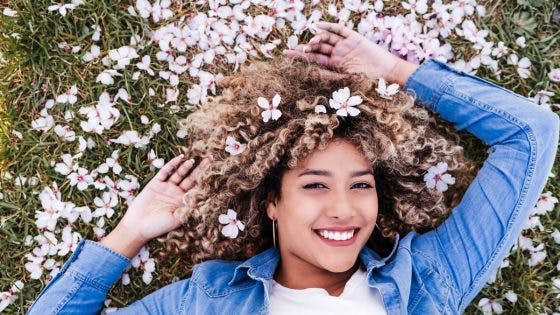Your Curls Defined: How to Identify Your Curly Hair Type
8 minutes read
Why do curly hair types need to be defined? When you figure out what kind of curls you have and understand the science behind curl formation, you’ll learn how to care about your specific type. This is the first step to your beautiful and healthy locks, regardless of your place in a curl pattern chart.
Curly hair structure is different to straight — the curly hair follicle is curved, so strands turn into waves and spirals when growing. The rarest hair type is ‘straight’ and is linear from the scalp to the ends. Sometimes, even if you think your hair is straight and just a bit fuzzy or unruly, you can try the curly girl method and find out that you can achieve a wavy texture.
What are the different curly hair types?
All hair types are divided into four parts: Type 1 — is straight hair.
- Type 2 hair is wavy; it varies from barely noticeable to deep waves. But wavy hair stays straight when wet, and when it’s dry, it just flows and doesn’t wrap around itself. The no.2 hair type breaks down into 2A (soft waves), 2B (wavy), and 2C (deep waves). If you have wavy hair, nourish it well, and use styling products to tame frizz and boost volume.
- Type 3 hair is curly; dry strands take spring shapes and look wavy while wet. Curly hair types can include strands in unique shapes and different hair types. For example, no.3 hair type is divided into 3A (soft curls), 3B (curly), and 3C (ultra-curly). If your hair type is one of these, choosing unique care products for curly hair is recommended to moisturise, nourish and prevent frizz.
- Type 4 hair is coily, meaning the strands vary from zig-zags to S-shaped, and their combination. No.4 type curl patterns significantly shrink when hair gets dry from wet and includes 4A (coiled), 4B (zig-zag), and 4C (tightly coiled). For coily hair types, it is worth trying natural oils, specialist curly hair care, or non-sulfate washing, especially if your hair gets very dry after regular shampoo.
The benefits of curly hair
The curlier your hair is, the stronger its inherent features may appear. So, the tighter waves you naturally have, the more they are prone to dehydration and breakage. But the advantages of curly hair are that it doesn’t look greasy, and you can create easy up-do’s as it has staying power.
Caring for curly hair
Curls need to be nourished and moisturised well to stay strong and shiny. If your locks are dry, try non-sulfate shampoo.
Co-washing became popular, but experts can’t agree whether this is good — and we have to say, the jury is still out. The pros are that there’s no dryness from the shampoo, but the drawbacks are — hair might not be super clean, leading to scalp issues.
Always condition your hair after washing and include hair masks in your beauty routine. For example, you can apply Nourishing Strengthening Hair Mask with shea butter and argan oil 1-3 times a week. Its nourishing formula helps to restore your hair, make it soft and radiant.

The ideal routine:
Shampoo — this will eliminate grease, dirt, and existing product, but it also opens the hair follicles, ready for the next steps. Next, apply a dedicated hair mask — so it can penetrate deeply. Finally, rinse and then follow with your conditioner.
Leave-in products are highly recommended for curly hair to protect the fibre from dehydration. Nourishing Beauty Hair Oil contains organic camellia and argan oil; you can apply it to damp or dry hair to tame frizz, make your hair shiny and smooth, protect from damage and give a wonderful scent of Grapefruit, Patchouli, Ylang-Ylang, and Mandarin.
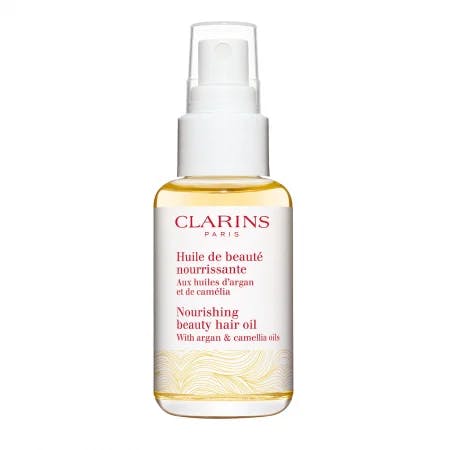
If in doubt, refer to our curly hair chart
How do I determine my curly hair type? First, use the curl type chart displaying different curl types. To identify your type of curls, you need to take your damp strand and let it dry naturally, then look at its shape and recognise which type it belongs to. Sometimes, you might have a mixed type — and this texture change can also happen during menopause, so different strands can relate to various types, but this chart can help you get the main idea of your curls type.
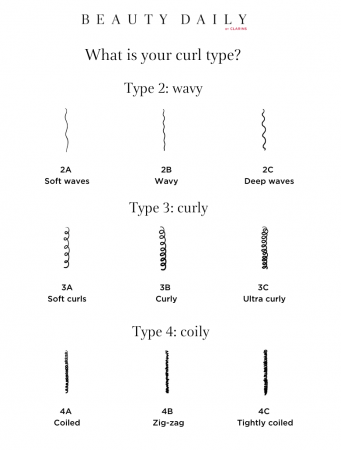
Type 2A hair: soft waves
2A hair type is straight from the roots, and the wave comes close to the ends of your locks. Some strands of this hair type are straight, and some are wavy. Waves usually appear if you dry your hair naturally or use a salt spray. 2A hair type needs minimum styling and only a few products to boost your roots, like hair mousse or styling sprays.
Ingredient to look for: Try picking products with panthenol, also known as vitamin B5. It pairs perfectly with water-soluble products, such as conditioners, making your waves strong and shiny. To give your hair that wavy structure and keep your locks defined, use a blow-dryer with a diffuser.
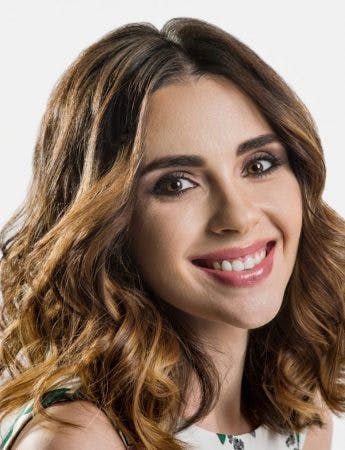
Type 2B hair: wavy
2B hair is S-shaped waves which appear at the crown. To avoid messy nest-like hair, you must simultaneously soften your locks and boost the root volume. Try leave-in products, hair creams, and lighter, silicone-free serums to tame frizz and protect your locks in high humidity or colder weather.
Ingredient to look for: Lecithin in conditioners is an alternative to silicones, which help build up a shiny coating on your hair but do not impact the follicle and help keep the volume from the roots.
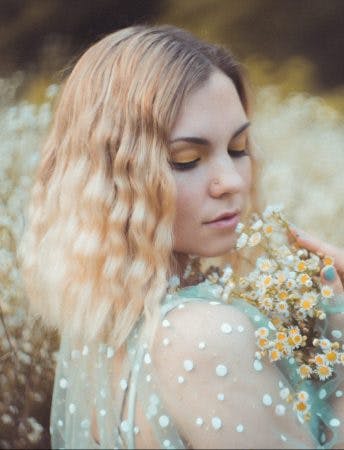
Type 2C hair: deep waves
2C curly hair has the tightest wave, close to curly hair texture, but these waves do not form into springs. 2C hair type is voluminous and wavy from the roots. It can be prone to frizz, so fight it by moisturising your hair; try leave-in products, oils, creams and serums.
Ingredient to look for: silk proteins derived from silk amino acids help moisturise and restore frizzy, damaged hair, so you can grow it healthier and longer.
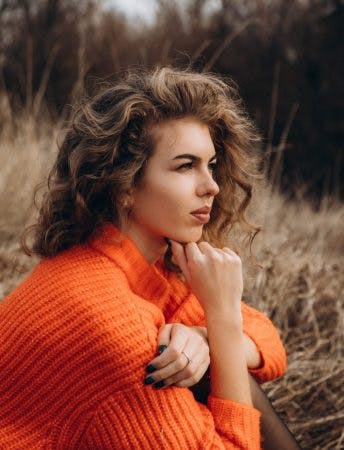
Type 3A hair: soft curls
3A hair means large bouncy curls which roll down from the crown. 3A curly hair is soft and needs minimal styling. To achieve voluminous and defined 3A curls, you only need to apply a mousse or a styling cream before drying. Don’t forget thermal protection to act as a barrier and keep hair healthy and shiny.
Ingredient to look for: To define your curls and make them look less frizzy on humid days, try to pick up glycerin-based products. Glycerin is a common, budget-friendly ingredient that helps your curls stay moisturised and keep the moisture inside.
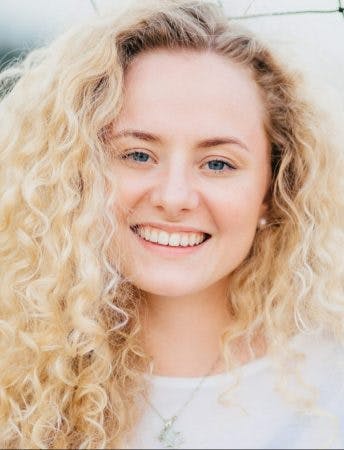
Type 3B hair: curls
3B hair type looks like medium-sized, spiral-shaped and defined curls. 3B curly hair doesn’t need a root volume boost but is prone to dryness, breakage, and frizz. Use a cotton or microfiber towel; we love Aquis Lisse Luxe Hair Turban and Hair Towel to protect your hair from damage when it’s wet. Apply leave-in moisturising products to avoid frizz and give your hair radiance.
Ingredient to look for: It can be tricky to grow dry and prone to breakage hair — if this is your goal, try castor oil. It nourishes the hair fibre, scalp, and follicles to boost strength.
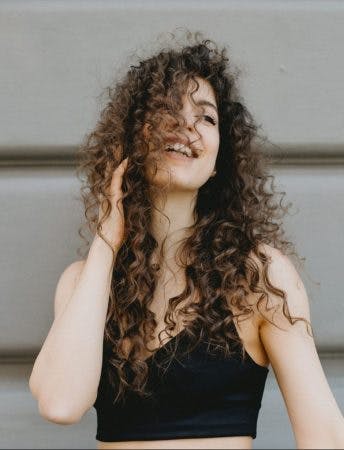
Type 3C hair: ultra-curly
3C hair type is easily identified by small, tight, spring-shaped curls. These defined or loose curls can be hard to detangle, so it’s recommended to condition your hair well and invest in the right tools. Brush it gently from ends to roots using a Tangle Teezer Naturally Curly with Hair Pick Bundle. It is created for 3C to 4C hair types and helps speed up your beauty routine by detangling in super-quick time.
Ingredient to look for: One of the best nourishing oils for curly hair is coconut oil, and for a reason. It can give you hair gloss, and when massaged into the scalp, it may help your hair grow faster and strengthen the protein structure.
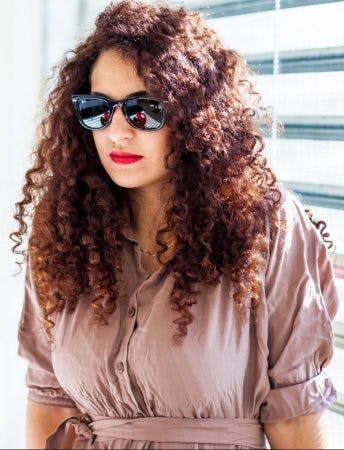
Type 4A hair: coiled
4A curl type is small and S-shaped. To avoid dehydration of your tight curls, use only moisturising shampoos and don’t rub your hair while washing. For softening coiled curls, use nourishing oils and creamy leave-in products.
Ingredient to look for: Have you tried abyssinian seed oil on your curly hair? It’s enriched with nutrients like fatty acids and omega-9. Abyssinian seed oil helps to detangle your hair, moisturise and prevent breakage. To safely detangle thick and unruly hair when wet, try Wetbrush Thick Hair Pro Detangler with elastic bristles that help detangle knots in a few minutes without pain, stress, or breakage.

Type 4B hair: zig-zag
4B hair type got a zig-zag pattern, but it can be combined with S-shaped coils. The key to healthy zig-zag curls is moisturising and nourishing with natural oils, like argan, jojoba, coconut, castor oil, or shea butter. Avoid formulas with alcohol and strong fragrances to prevent hair dehydration.
Ingredient to look for: Argan oil is often used in haircare products, especially for dry and curly hair, due to its successful anti-breakage properties. It contains antioxidants, oleic and linoleic acid to bolster shine, calm frizz and protect from pollution.
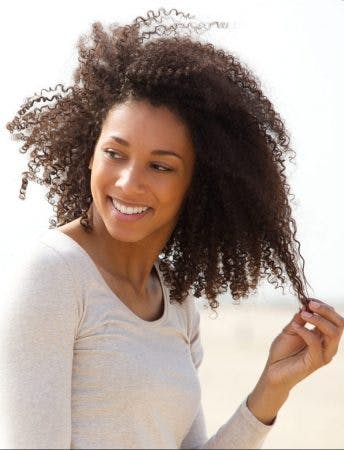
Type 4C hair: tightly coiled
4C curls are the tightest and the most prone to damage, especially when wet. To keep them protected and moisturised, stock up on the full list of curly-girl hair remedies — deep conditioners, natural oils, and leave-in products. Comb in sections so it’s easier to manage.
Ingredient to look for: Try products containing Manketti Oil — it’s high in fatty acids and vitamin E, keeping moisture locked into hair for longer.
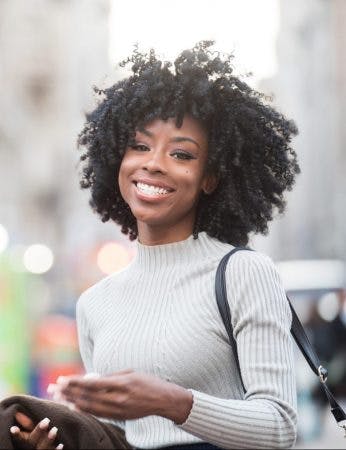
Sign up for our newsletter
We will keep you in the loop for special offers, exclusive gifts and product news.

